The ratio of long to short positions in the EURUSD stands at -3.61 as 22% of traders are long. Yesterday the ratio was -5.01; 17% of open positions were long.
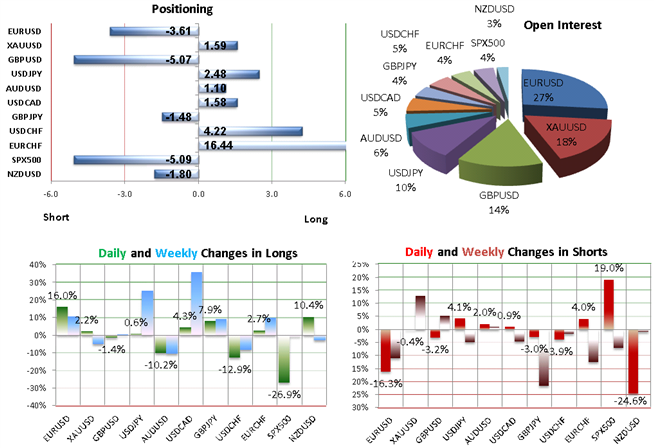
Long positions are 16.0% higher than yesterday and 10.7% above levels seen last week. Short positions are 16.3% lower than yesterday and 11.2% below levels seen last week.
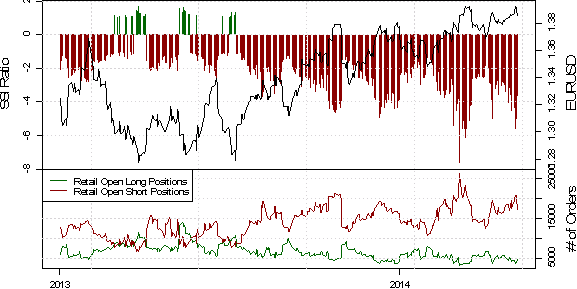
We use our SSI as a contrarian indicator to price action, and the fact that the majority of traders are short gives signal that the EURUSD may continue higher.
Bloomberg analysts have written at length over the past few days about possible causes behind the “death of volatility”.
But there’s good news! Low volatility is a blessing in disguise for most forex traders. This Wednesday and Thursday, the analysts at DailyFX are hosting a couple of free webinars to show you how to take advantage of current market conditions.
[B]Low-Volatility Trading: The Two-Hour Trade Week[/B]
[I]Wednesday, 14 May, 2014 10:00 GMT[/I]
In this webinar, Jeremy Wagner and David De Ferranti will show you how to find effective low-volatility strategies and automate your trades for big opportunities on a tight timeline. Register for Free.
[B]Low-Volatility Trading: The Hunt for Breakouts[/B]
[I]Thursday, 15 May, 2014 04:00 GMT[/I]
In this webinar, Jeremy and David combine an effective range-bound strategy, impending global economic news and aggressive trade management to hunt for coming breakouts. Register for Free.
Retail traders have remained mostly short the Euro versus the Yen as the EUR/JPY exchange rate trades near important highs.
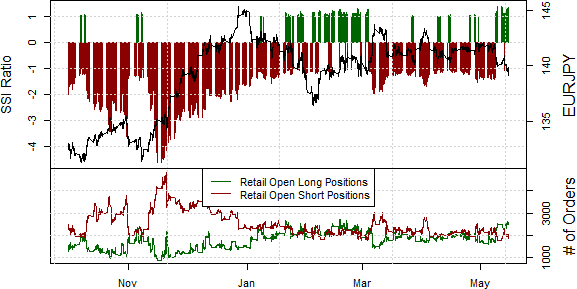
Yet in the past week we’ve seen long interest jump 34 percent and total longs are now at their highest levels in over two years.

The material swing in sentiment warns of continued losses—particularly as we’ve seen a similar turn in EUR/USD.
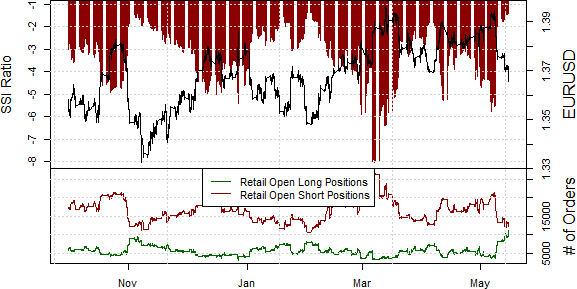
Here’s an excerpt from David Maycotte’s article on DailyFX.com about key forex events this week:

DailyFX analysts will be covering both events this week in the Live Trading Room.
The HSBC’s Manufacturing Purchasing Manager Index is scheduled to come out Thursday, May 22nd at 01:45 GMT.

A dismal print may pave the way for a larger decline in the AUD/USD as it dampens the outlook for the Australian economy.
A break below 0.9200 could target Fib levels at 0.9155, 0.9060 and 0.8966.
[QUOTE=“Jason Rogers;628494”]Retail traders have remained mostly short the Euro versus the Yen as the EUR/JPY exchange rate trades near important highs.
Yet in the past week we’ve seen long interest jump 34 percent and total longs are now at their highest levels in over two years.
The material swing in sentiment warns of continued losses—particularly as we’ve seen a similar turn in EUR/USD.
[/QUOTE]
EUR/JPY seems to be on a uptrend now.
It sounds like you’re a short term trader. 
Here’s the hourly chart for EUR/JPY…
and here’s the daily chart.
The ratio of long to short positions in the EUR/JPY stands at 1.36 as 58% of traders are long. Yesterday the ratio was 1.45; 59% of open positions were long. Long positions are 1.9% lower than yesterday and 12.3% above levels seen last week. Short positions are 4.6% higher than yesterday and 6.1% above levels seen last week.
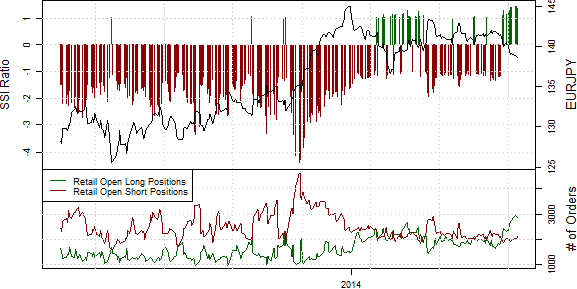
The fact that the majority of traders are long gives signal that EUR/JPY may continue lower. Other the other hand, the trading crowd has grown less net-long from yesterday but further long since last week. This combination of current sentiment and recent changes gives a mixed trading bias.
Traders who are short USD/RUB collect rollover interest daily at 5pm New York time. Triple rollover for Wednesday is $3.15 per 10k.
Those looking for a possible entry point to go short can consider the 38.2% retracement level at 35.10.
In his article on DailyFX.com, trading instructor Rob Pasche pointed out that “91% of retail traders are short” the USD/CNH currency pair which means they are long the Chinese yuan relative to the US dollar.

SSI is a contrarian indicator to price action. The fact that the majority of traders are short gives signal that the USD/CNH may continue higher. The trading crowd has grown further net-short from yesterday and last week. The combination of current sentiment and recent changes gives a further bullish trading bias.
[B]Buy Setup for USD/CNH (US dollar vs. Chinese yuan)[/B]

Rob Pasche sets his [I]“entry order to buy around 6.2340. A stop loss below these levels at 6.2250 could be appropriate to cut losses quickly if the trade moves against us. Targets could be set as high as 6.2750 if USD/CNH were to reach the top of the primary price channel in the next couple of weeks.”[/I]
Retail forex traders are extremely long the Euro versus the Japanese yen and the EUR/JPY exchange rate is trading near important price support levels.
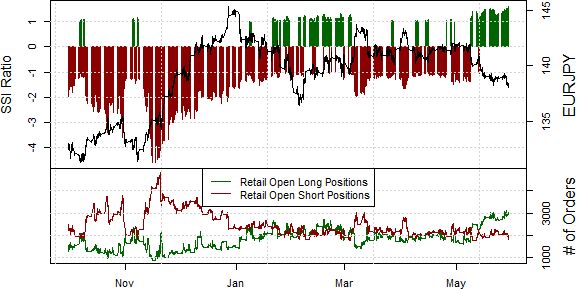
A contrarian view of crowd sentiment leaves DailyFX quantitative strategist David Rodriguez in favor of continued Euro losses versus the Yen.
The Speculative Sentiment Index (SSI) for EUR/USD stands at -1.23 indicating that there are 1.23 retail traders who are short the pair for each one that’s long.
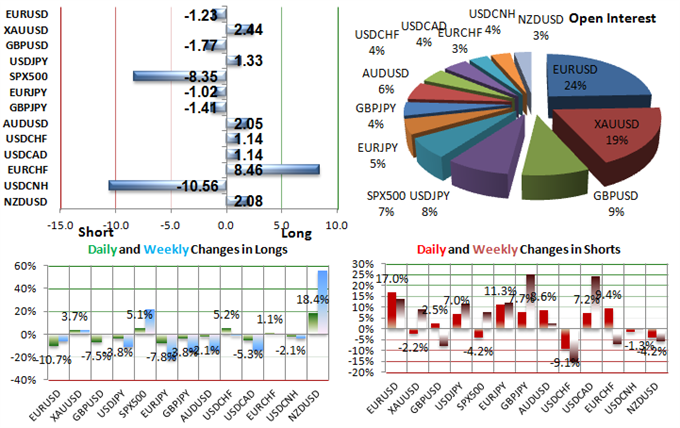
Yesterday the ratio was 1.06; 52% of open positions were long. Long positions are 10.7% lower than yesterday and 6.7% below levels seen last week. Short positions are 17.0% higher than yesterday and 14.0% above levels seen last week.
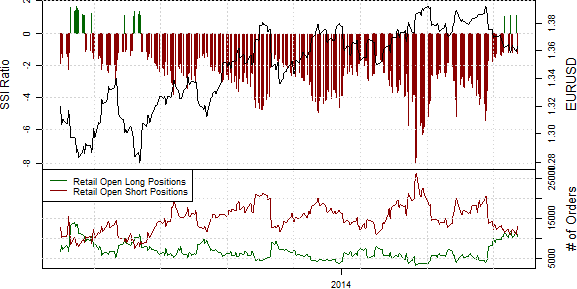
SSI is a contrarian indicator to price action, so the fact that the majority of traders are short gives signal that the EUR/USD may continue higher. The combination of current sentiment and recent changes gives a further bullish trading bias.
The ECB took the unprecedented step today of imposing a negative interest rate on banks for their deposits—in effect charging lenders to park money with it.
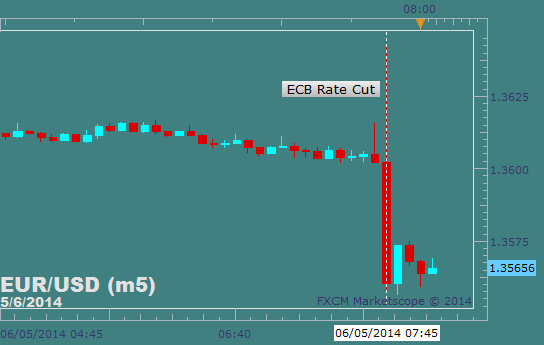
While the Euro dropped to 1.35023 on the announcement, it but is now trading above the pre announcement levels at around 1.36374.
In fact the 24-Hour Trend Locator shows strong signs across most indicators and time frames that EUR/USD could continue even higher.

Furthermore, the Speculative Sentiment Index (SSI) confirms that retail traders flipped from being net long the pair to being net short. Since SSI is a contrarian indicator, this is another sign EUR/USD could rise.
A recap of today’s NFP:
- Change in Nonfarm Payrolls (MAY): +217K versus +215K expected, from +282K (revised lower from +288K).
- Change in Private Payrolls (MAY): +216K versus +210K expected, from +270K (revised lower from +273K).
- Unemployment rate (MAY): 6.3% unch versus 6.4 % expected.
- Participation Rate (MAY): 62.8% unch.
Currency analyst Christopher Vecchio commented on DailyFX.com: “Even though the better than expected headline figures provoked a quick rally in the US Dollar across the board, price quickly reversed trend and the EURUSD jumped from $1.3826 post-release to as hiugh as 1.3676 shortly after. Within thirty minutes of the report release, the EURUSD was trading near 1.3671.”

The latest SSI confirm that retail traders have increased their net short positioning in EUR/USD since my post yesterday, which could suggest that EUR/USD might be continue with further gains.

Quantitative strategist David Rodriguez says the Euro looks like a buy here versus the US dollar as it trades near support.
[I]“In concrete terms, we’re looking to buy major currency pairs as they test support and sell if they approach resistance. The Euro in particular looks like an attractive buy at these levels; a break of the post-ECB low looks unlikely until we see a material shift in market conditions.”[/I]
Trading instructor Tyler Yell says, "There are two patterns unfolding that are pointing to the potential for significantly higher prices should AUDUSD close above 0.9410…
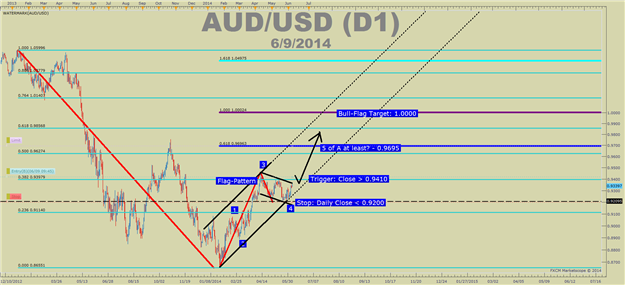
“Both of these patterns could see AUDUSD targeting between 0.9695-1.000… The trigger to enter is 0.9410 & the stop at 0.9200 is the same for both patterns.”




